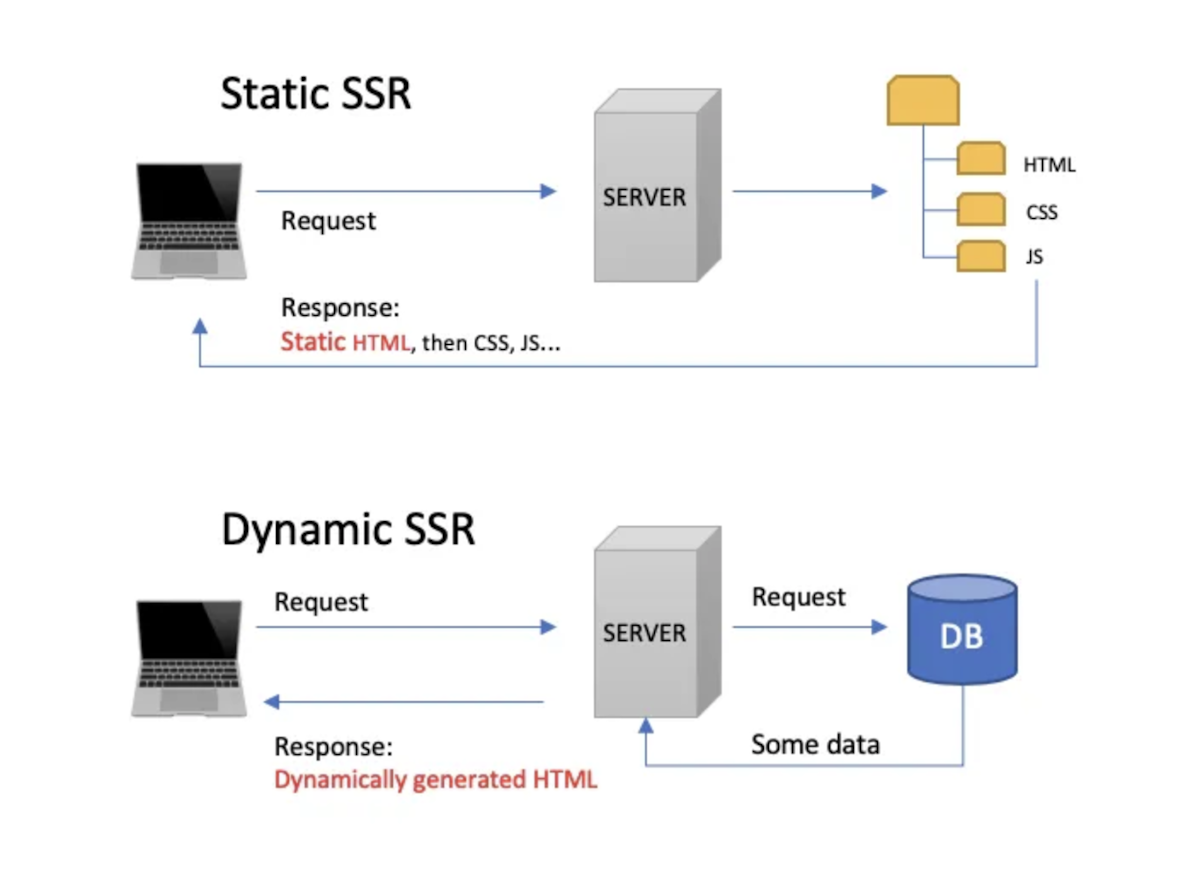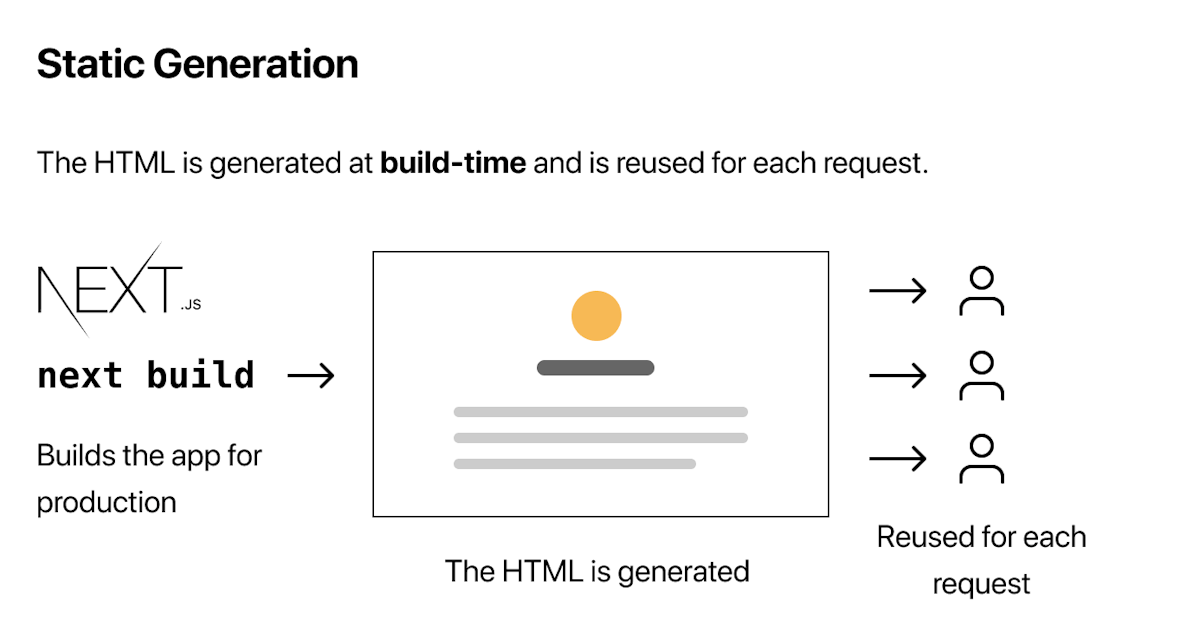
Boost Your Website Speed with Jamstack
Elena TikhonovaJune 26th, 2023
Brief summary
Understanding Google PageSpeed Insights
The Power of Jamstack
Leveraging Next.js for Jamstack Websites
Server-Side Rendering (SSR) with Next.js
Static Site Generation (SSG) with Next.js
Implementing Google PageSpeed Insights Recommendations
Minimize JavaScript and CSS
Optimize Images
Leverage Caching and Content Delivery Networks (CDNs)
Prioritize Above-the-Fold Content
Optimize Server Response TimeScroll down to read the entire article.
Website performance plays a crucial role in attracting and retaining visitors to the website. One of the key factors that impacts a website's performance is its loading speed. Slow-loading websites not only frustrate users but also rank lower in search engine result pages (SERPs).
In this article, we will delve into the world of Google PageSpeed Insights and explore how leveraging Jamstack architecture and Next.js can significantly improve your website's loading speed, user experience, and ultimately, its search engine rankings.
Understanding Google PageSpeed Insights
Google PageSpeed Insights is a powerful tool developed by Google to evaluate the performance of websites on both desktop and mobile devices. It provides valuable insights and recommendations on how to optimize a website's speed and performance. By following these recommendations, website owners can enhance user experience, reduce bounce rates, and potentially achieve higher rankings in search engine results.
The Power of Jamstack
Jamstack, which stands for JavaScript, APIs, and Markup.
It is a modern web development architecture that offers significant advantages in terms of performance, security, and scalability.
It decouples the frontend and backend, enabling faster rendering and pre-building of static assets.
By embracing Jamstack, you can create websites that are optimized for speed and deliver exceptional user experiences.

Leveraging Next.js for Jamstack Websites
Next.js, a popular JavaScript framework built on top of React, is an excellent choice for developing Jamstack websites. It combines the benefits of React's component-based architecture with Next.js's powerful features, such as server-side rendering (SSR) and static site generation (SSG). Let's explore how Next.js can help improve your website's performance.
Server-Side Rendering (SSR) with Next.js

Server-Side Rendering (SSR) is a rendering technique that generates the HTML of a web page on the server side, before sending it to the client's browser.
In traditional client-side rendering (CSR), the browser loads a minimal HTML structure, and JavaScript is responsible for fetching data and rendering the page content.
SSR, on the other hand, pre-renders the page on the server, delivering a complete HTML page to the client right from the start.
The Advantages of SSR
Improved Performance: SSR significantly reduces the initial load time of a web page, as the client receives a fully rendered HTML page. This leads to a faster perceived page load and better user experience.
Search Engine Optimization (SEO): Search engines can easily crawl and index SSR pages because they receive complete HTML content. This results in better search engine rankings and visibility.
Accessibility: SSR ensures that the content is available to users with JavaScript disabled or to web crawlers that don't execute JavaScript.
Next.js: The SSR Powerhouse
Next.js is a popular React framework that simplifies the implementation of SSR. It provides developers with a set of tools and conventions to enable SSR effortlessly.
Key Features of Next.js for SSR:
File-Based Routing: Next.js uses a file-based routing system, making it intuitive to create pages and API routes. Each file in the
pagesdirectory corresponds to a route, making code organization a breeze.getServerSideProps: Next.js introduces the
getServerSidePropsfunction, which fetches data on the server and passes it to the component as props. This is where SSR magic happens.Static Site Generation (SSG): In addition to SSR, Next.js supports SSG, allowing you to pre-render pages at build time. This is ideal for content that doesn't change frequently.
Automatic Code Splitting: Next.js automatically splits your JavaScript bundles, ensuring that only the necessary code is sent to the client, further improving performance.
Static Site Generation (SSG) with Next.js
Static Site Generation (SSG) with Next.js is a web development approach that combines the benefits of static websites with the flexibility of dynamic web applications. Next.js is a popular JavaScript framework that enables SSG by default. Here's a brief overview of SSG with Next.js:
Static Site Generation (SSG):
SSG is a method of generating web pages at build time rather than on each user request. This means that the HTML, CSS, and JavaScript for your website are pre-rendered as static files before deployment. This approach offers several advantages, including improved performance, security, and SEO.

Next.js:
Next.js is a React framework for building web applications. It simplifies the process of implementing SSG and provides features like automatic code splitting, routing, and server-side rendering (SSR).
How SSG with Next.js Works:
Data Fetching: Next.js allows you to fetch data at build time using functions like
getStaticPropsorgetServerSideProps. This data is used to pre-render pages.Page Generation: When you build your Next.js application, it generates static HTML files for each page based on the data fetched during the build process.
Deployment: These static HTML files can be deployed to a web server or a content delivery network (CDN).
Benefits of SSG with Next.js:
Faster Load Times: Static files load faster than dynamically generated pages, resulting in a better user experience.
SEO-Friendly: Pre-rendered pages are more SEO-friendly because search engines can index them easily.
Improved Security: Since there's no server-side processing for each request, SSG reduces the attack surface and enhances security.
Lower Server Costs: Hosting static files is typically cheaper than running server-side code for every request.
Hybrid Approach:
Next.js also supports a hybrid approach where you can combine SSG with client-side rendering (CSR) or server-side rendering (SSR) for parts of your application that require dynamic data.
Implementing Google PageSpeed Insights Recommendations
Now that we understand the power of Jamstack and Next.js, let's dive into implementing some key recommendations from Google PageSpeed Insights to further optimize your website.
Minimize JavaScript and CSS
One of the critical factors affecting a website's loading speed is the size and complexity of its JavaScript and CSS files. To optimize your website, you should minimize these files by removing unnecessary code, reducing white spaces, and utilizing minification techniques. By reducing the file size, your website will load faster, leading to improved user experience and higher search engine rankings.
Optimize Images
Images are often the largest assets on a website, and if not optimized, they can significantly slow down the loading speed. To address this issue, you should compress images without compromising their quality. There are various tools available, such as image compression libraries and CDNs, which can help you achieve optimal image loading speeds.
Leverage Caching and Content Delivery Networks (CDNs)
Implementing browser caching and utilizing Content Delivery Networks (CDNs) are effective techniques to reduce latency and improve website performance. Caching allows the browser to store certain files locally, reducing the number of server requests required for subsequent page loads. CDNs distribute your website's assets across multiple servers worldwide, enabling faster content delivery to users. By leveraging caching and CDNs, you can significantly enhance your website's loading speed and overall performance.
Prioritize Above-the-Fold Content
Above-the-fold content refers to the portion of a webpage that is visible to users without scrolling. To enhance the perceived loading speed, you should prioritize the rendering of above-the-fold content. By doing so, users can access critical information faster, leading to better user engagement and reduced bounce rates.
Optimize Server Response Time
Server response time is a critical aspect of website performance. To optimize server response time, ensure that your hosting infrastructure is robust and capable of handling incoming requests efficiently. Consider utilizing a reliable hosting provider that offers fast servers and optimal network connectivity. Additionally, you can implement caching mechanisms and database optimizations to reduce server load and response time.
In this article, we explored the importance of website performance and how it impacts search engine rankings. By adopting the Jamstack architecture with Next.js, you can significantly improve your website's loading speed, user experience, and ultimately outrank your competitors in search engine results. Additionally, implementing key recommendations from Google PageSpeed Insights, such as minimizing JavaScript and CSS, optimizing images, leveraging caching and CDNs, prioritizing above-the-fold content, and optimizing server response time, will further boost your website's performance. Embrace these strategies, and watch your website soar to new heights in search engine rankings.
Remember, a fast-loading website not only benefits your users but also contributes to your business's success in the digital landscape. Stay ahead of the competition by prioritizing performance optimization and reaping the rewards of improved search engine rankings.
Do you need to increase website page loading?
It's FREE to contact us and discuss how we can increase your website's page load speed.
Leave your comment
Your feedback is very important to us. Share your thoughts on what you read, or tell your own story.
Rating